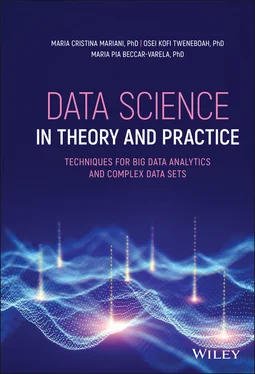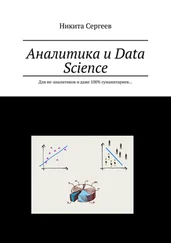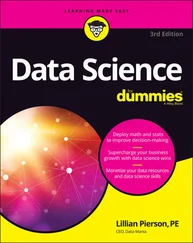Figure 4.6 Cyclical component (imposed on the underlying trend). The horizontal axis is time  and the vertical axis is the time series
and the vertical axis is the time series  .
.
Figure 7.1The big O notation.
Figure 7.2The  notation.
notation.
Figure 7.3The  notation.
notation.
Figure 7.4Symbols used in flowchart.
Figure 7.5Flowchart to add two numbers entered by user.
Figure 7.6Flowchart to find all roots of a quadratic equation  .
.
Figure 7.7Flowchart.
Figure 8.1The box plot.
Figure 8.2Box plot example.
Figure 9.1Scatter plot of temperature versus ice cream sales.
Figure 9.2Heatmap of handwritten digit data.
Figure 9.3Map of earthquake magnitudes recorded in Chile.
Figure 9.4Spatial distribution of earthquake magnitudes (Mariani et al. 2016).
Figure 9.5Number of text messages sent.
Figure 9.6Normal Q–Q plot.
Figure 9.7Risk of loan default. Source: Tableau Viz Gallery.
Figure 9.8Top five publishing markets. Source: Modified from International Publishers Association – Annual Report.
Figure 9.9High yield defaulted issuer and volume trends. Source: Based on Fitch High Yield Default Index, Bloomberg.
Figure 9.10Statistics page for popular movies and cinema locations. Source: Google Charts.
Figure 10.1One‐step binomial tree for the return process.
Figure 11.1Height versus weight.
Figure 11.2Visualizing low‐dimensional data.
Figure 11.32D data set.
Figure 11.4First PCA axis.
Figure 11.5Second PCA axis.
Figure 11.6New axis.
Figure 11.7Scatterplot of Royal Dutch Shell stock versus Exxon Mobil stock.
Figure 12.1Classification (by quadrant) of earthquakes and explosions using the Chernoff and Kullback–Leibler differences.
Figure 12.2Classification (by quadrant) of Lehman Brothers collapse and Flash crash event using the Chernoff and Kullback–Leibler differences.
Figure 12.3Clustering results for the earthquake and explosion series based on symmetric divergence using PAM algorithm.
Figure 12.4Clustering results for the Lehman Brothers collapse, Flash crash event, Citigroup (2009), and IAG (2011) stock data based on symmetric divergence using the PAM algorithm.
Figure 13.1Scatter plot of data in Table 13.1
Figure 16.1The  ‐plane and several other horizontal planes.
‐plane and several other horizontal planes.
Figure 16.2The  ‐plane and several parallel planes.
‐plane and several parallel planes.
Figure 16.3The plane  .
.
Figure 16.4Two class problem when data is linearly separable.
Figure 16.5Two class problem when data is not linearly separable.
Figure 16.6ROC curve for linear SVM.
Figure 16.7ROC curve for nonlinear SVM.
Figure 17.1Single hidden layer feed‐forward neural networks.
Figure 17.2Simple recurrent neural network.
Figure 17.3Long short‐term memory unit.
Figure 17.4Philippines (PSI). (a) Basic RNN. (b) LTSM.
Figure 17.5Thailand (SETI). (a) Basic RNN. (b) LTSM.
Figure 17.6United States (NASDAQ). (a) Basic RNN. (b) LTSM.
Figure 17.7JPMorgan Chase & Co. (JPM). (a) Basic RNN. (b) LTSM.
Figure 17.8Walmart (WMT). (a) Basic RNN. (b) LTSM.
Figure 18.13D power spectra of the daily returns from the four analyzed stock companies. (a) Discover. (b) Microsoft. (c) Walmart. (d) JPM Chase.
Figure 18.23D power spectra of the returns (generated per minute) from the four analyzed stock companies. (a) Discover. (b) Microsoft. (c) Walmart. (d) JPM Chase.
Figure 19.1Time‐frequency image of explosion 1 recorded by ANMO (Table 19.2).
Figure 19.2Time‐frequency image of earthquake 1 recorded by ANMO (Table 19.2).
Figure 19.3Three‐dimensional graphic information of explosion 1 recorded by ANMO (Table 19.2).
Figure 19.4Three‐dimensional graphic information of earthquake 1 recorded by ANMO (Table 19.2).
Figure 19.5Time‐frequency image of explosion 2 recorded by TUC (Table 19.3).
Figure 19.6Time‐frequency image of earthquake 2 recorded by TUC (Table 19.3).
Figure 19.7Three‐dimensional graphic information of explosion 2 recorded by TUC (Table 19.3).
Figure 19.8Three‐dimensional graphic information of earthquake 2 recorded by TUC (Table 19.3).
Figure 21.1  for volcanic eruptions 1 and 2.
for volcanic eruptions 1 and 2.
Figure 21.2DFA for volcanic eruptions 1 and 2.
Figure 21.3DEA for volcanic eruptions 1 and 2.
Table 2.1 Examples of random vectors.
Table 3.1 Ramus Bone Length at Four Ages for 20 Boys.
Table 4.1 Time series data of the volume of sales of over a six hour period.
Table 4.2 Simple moving average forecasts.
Table 4.3 Time series data used in Example 4.6.
Table 4.4 Weighted moving average forecasts.
Table 4.5 Trend projection of weighted moving average forecasts.
Table 4.6 Exponential smoothing forecasts of volume of sales.
Table 4.7 Exponential smoothing forecasts from Example 4.9.
Table 4.8Adjusted exponential smoothing forecasts.
Table 6.1Numbers.
Table 6.2Files mode in Python.
Table 7.1Common asymptotic notations.
Table 9.1Temperature versus ice cream sales.
Table 12.1Events information.
Table 12.2Discriminant scores for earthquakes and explosions groups.
Table 12.3Discriminant scores for Lehman Brothers collapse and Flash crash event.
Читать дальше

 and the vertical axis is the time series
and the vertical axis is the time series  .
. notation.
notation. notation.
notation. .
. ‐plane and several other horizontal planes.
‐plane and several other horizontal planes. ‐plane and several parallel planes.
‐plane and several parallel planes. .
. for volcanic eruptions 1 and 2.
for volcanic eruptions 1 and 2.
![Роман Зыков - Роман с Data Science. Как монетизировать большие данные [litres]](/books/438007/roman-zykov-roman-s-data-science-kak-monetizirova-thumb.webp)









